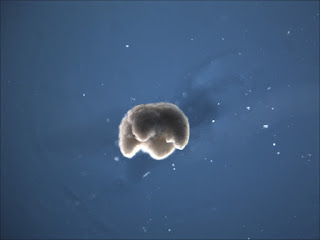The Biological Microbot that will Save Lives in the Near Future
A recent
development in systems biology combines biology and computer science in a way
never seen before, by letting AI methods model a miniscule robot made out of
frog tissue.
This may
all sound a little bizarre, so let’s clear it up. Sam Kriegman and his team in
Vermont followed the trend of solving complex problems by feeding them to AI. While
AI has become jargon everyone is familiar with, not everybody knows how it
works.
What this
research group essentially did was to let the AI automatically design various
potential lifeforms, with a specific function in mind. When they had the
blueprint, the next step was to try to recreate the lifeform in a lab.
The cells
they used to make the robot are embryonic stem cells harvested from an animal
named Xenopus Laevis, hence the name xenobots. This Xenopus is a widely used
model organism so there is a lot of information out there already about the
location of specific stem cells in the embryo which made this process possible.
The robot
itself is made out of two types of cells, cardiac and epithelial cells. The
first are contractile in nature, enabling the robot to move. The latter are cells
used to cover the surface of the robot.
But what purpose
can these robots serve? First and foremost, they may serve as an advanced way
to deliver drugs to specific parts inside the human body. Secondly, for the
purpose of pure science, this may help our understanding of how and why bodily
forms and functions may come to fruition. And lastly, since these robots are
made out of organic tissue, by which they break down after a couple of days,
they can be used to help us clean the environment.
As you
might have noticed, I have been reluctant to call this robot an organism, even
though it is made out of organic tissue. It is not clear if we should classify
these devices as such. In this huge grey area, questions lurk such as at which
point these robots are subject to ethical standards or what if we made these
robots out of human cells.
These robots
might prove very useful for all kinds of applications. But first we should have
a conversation about the moral implications of using self-created organisms for
our own benefit.
Sources:
Kriegman, S., et al. (2020). "A scalable pipeline for designing reconfigurable
organisms." Proceedings of the National Academy of Sciences of the United
States of America 117(4): 1853-1859.
Ball, P.
(2020). "Living robots." Nature Materials 19(3): 265-265.

Comments
Post a Comment